

Elderhostel
program on
Pompeii: Stories from an Eruption
at the
Field Museum
February 2006

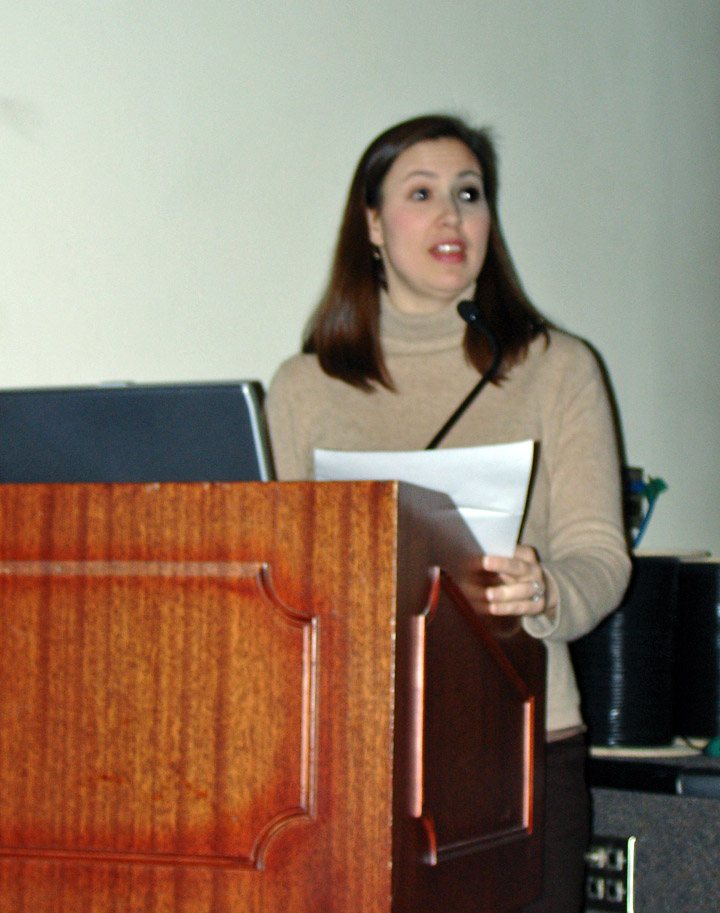
Lori Squire introduced the program
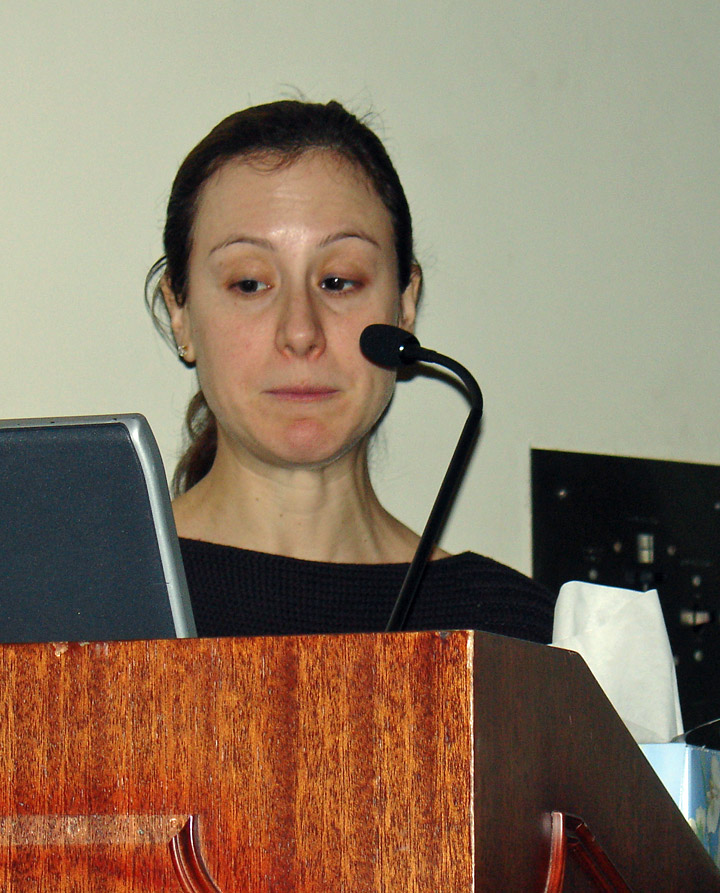
Francesca Madden told us about the exhibit
Pompeii may be the city most commonly
linked to the eruption of Mount Vesuvius in AD 79, but the cataclysmic events of
that year affected nearby towns just as violently: Herculaneum, Oplontis, and
others. These towns were rich in architecture, advanced infrastructures, and
exquisite works of art. The artifacts found there tell a vibrant story of an
ancient Roman society, advanced in many ways, which simply disappeared. A
generation after the eruption, Romans had gone back to their old way of life,
and tales of Pompeii had become part of local folklore. Underneath their feet
lay the remains of homes and families, works of art and animals, that were so
suddenly smothered by Vesuvius.
Pliny the Younger’s accounts of the eruption, sent to the historian Tacitus,
tell a grim but detailed tale of destruction. Together with archaeological and
volcanological data gathered from the area, Pliny’s text has allowed scientists
to reconstruct the events of this catastrophe.
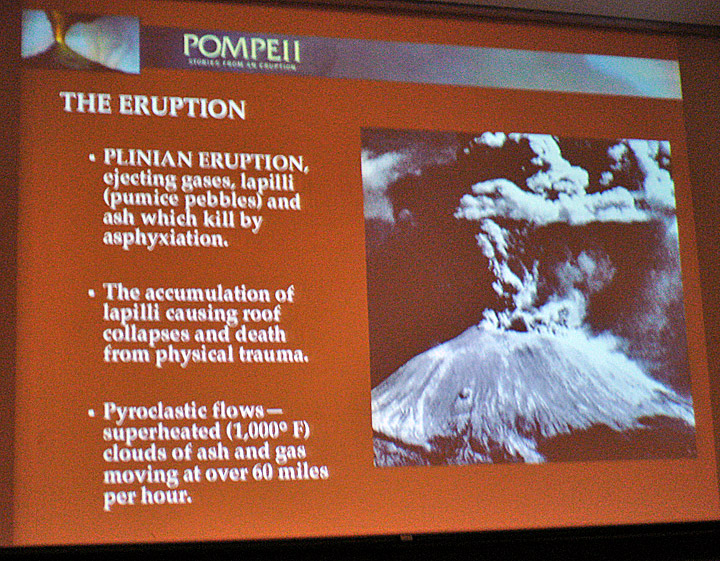
the eruption
Beginning around noon on August 24, Vesuvius began its assault, and the streets of Pompeii and the surrounding region began accumulating lapilli, or small pieces of solidified lava. Residents of the towns began to flee—some further inland, and many towards the sea, which was too turbulent to navigate. By dawn of the following morning, the eruption had poured an avalanche of ash onto Herculaneum, Oplontis, and finally Pompeii.
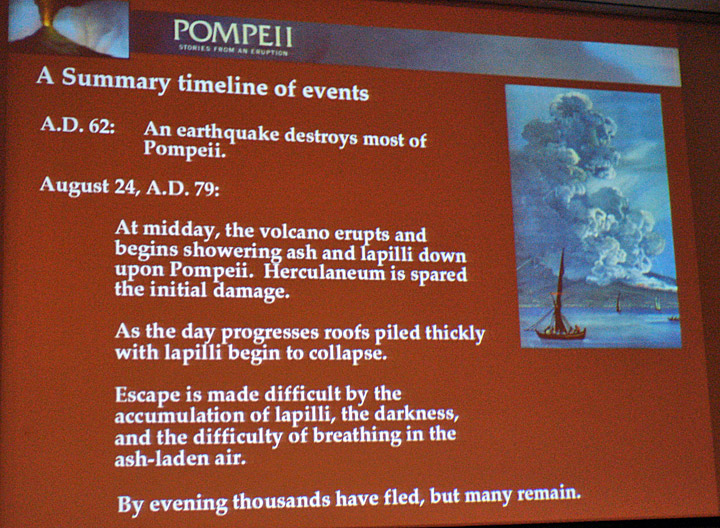
the event
The tragedy that occurred in such a
short period of time took the lives of thousands of people, but has given us a
rare opportunity to see a moment in ancient Roman life frozen forever.
Because of the prolonged nature of the eruption, many fugitives had time to
prepare for their flight. The remains of victims were found alongside many
possessions they held dear to them and hoped to save in their flight from the
ashes. These pieces proved extremely valuable in identifying the victims, and
help us reconstruct details of daily life: doctors carried with them their
surgical tools in hopes of helping others; the dominas, or women of the house,
held their precious jewels and heirlooms; and slaves were found with iron rings
around their ankles. But there is no certainty here—looters were abundant, and
not even experts can be sure of the difference between the thief and the
rightful owner.
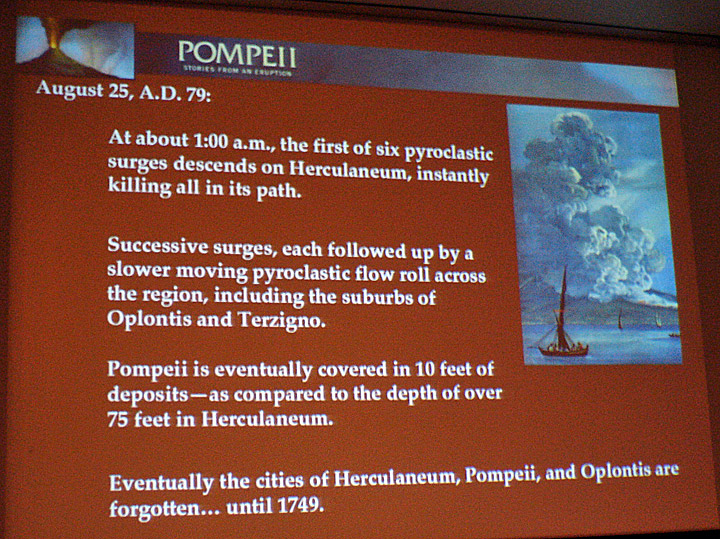
the result
The artifacts found near human remains attest to the affluence of many of Pompeii's inhabitants. In AD 79 the Roman Empire was just a century old, and Herculaneum, just north of Pompeii, was a seaside resort for the Roman elite, perhaps even for Emperor Nero. Through the excavations of Pompeii in the last 200 years, archaeologists have been able to draw important conclusions about life during this time. Pompeii: Stories from an Eruption

Cast of dog, Pompeii
The owners of this dog unfortunately left him tied to a chain when they fled from the House of Orpheus. The dog, who managed to stay alive during the first phase of the eruption, was finally overwhelmed by the last surge on the morning of August 25. Casts made from human remains show real people caught as they fled with their most prized possessions.
Pompeii was considered a large city
for the time, and even more cosmopolitan than Rome, which was several days’
journey from Pompeii. Because of Pompeii’s long and varied history of ownership,
foreign influences—such as the practice of Egyptian religious rites and the use
of Greek architecture—are evident everywhere in the city. It held administrative
control over the neighboring suburbs, and was a center for trade in crops, wine,
and olive oil. When Vesuvius erupted, much of Pompeii was still recovering from
the great earthquake of AD 62, and evidence of massive reconstruction efforts
were found during excavations.
Excavations as recent as 1999—during the expansion of the A3 autostrada, or
highway—uncovered some of the finest frescoes yet found in the region. These
frescoes, found in the House of the Triclinia in Moregine, cover the walls of
all three triclinia (literally, three-sided dining rooms). The frescoes were
meant to enhance the dining experience for guests, and some experts speculate
that this particular site may have been a travelers’ stop for Emperor Nero
himself. An assortment of muses lines the walls, among them: Euterpe, Muse of
dance and tragic choruses; Clio, Muse of history; Calliope, Muse of lyric
poetry; and others.
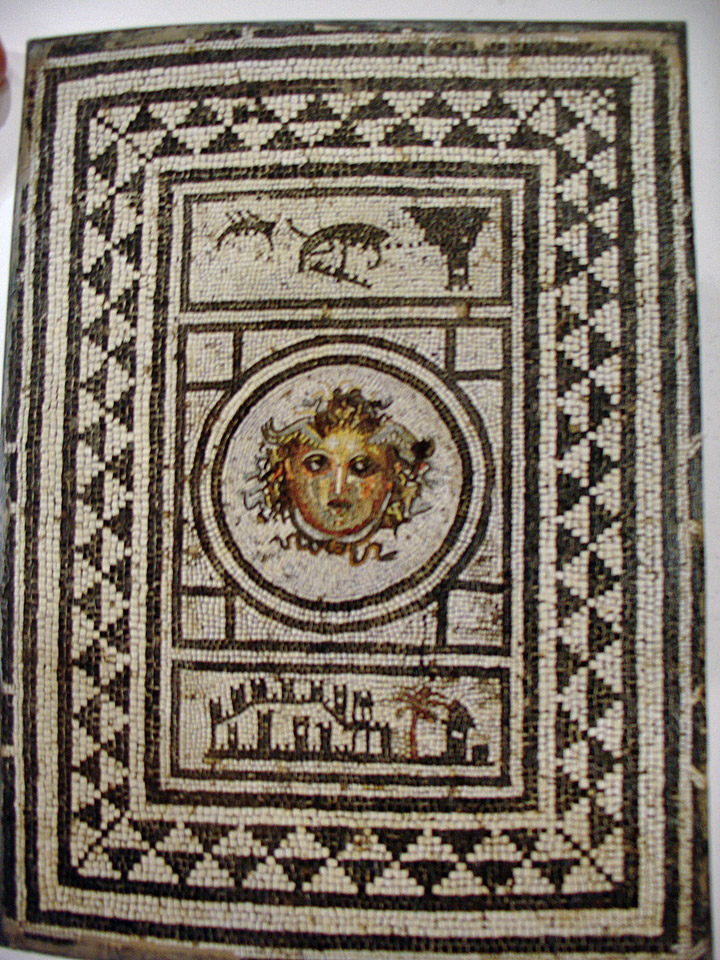
Mosaic found in the Pompeii excavation
After a Snack Lunch we were given a Tour
Behind the Scene
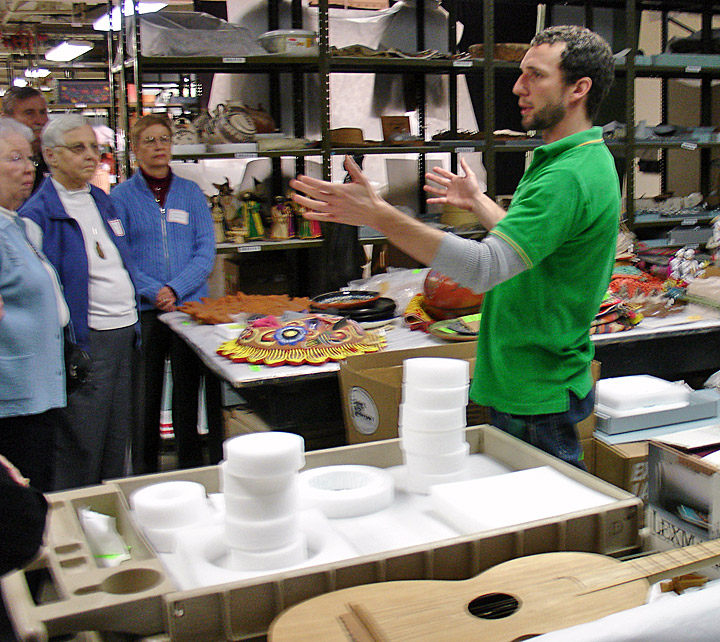
showing the Elderhostlers the Museum work area

met the Conservators
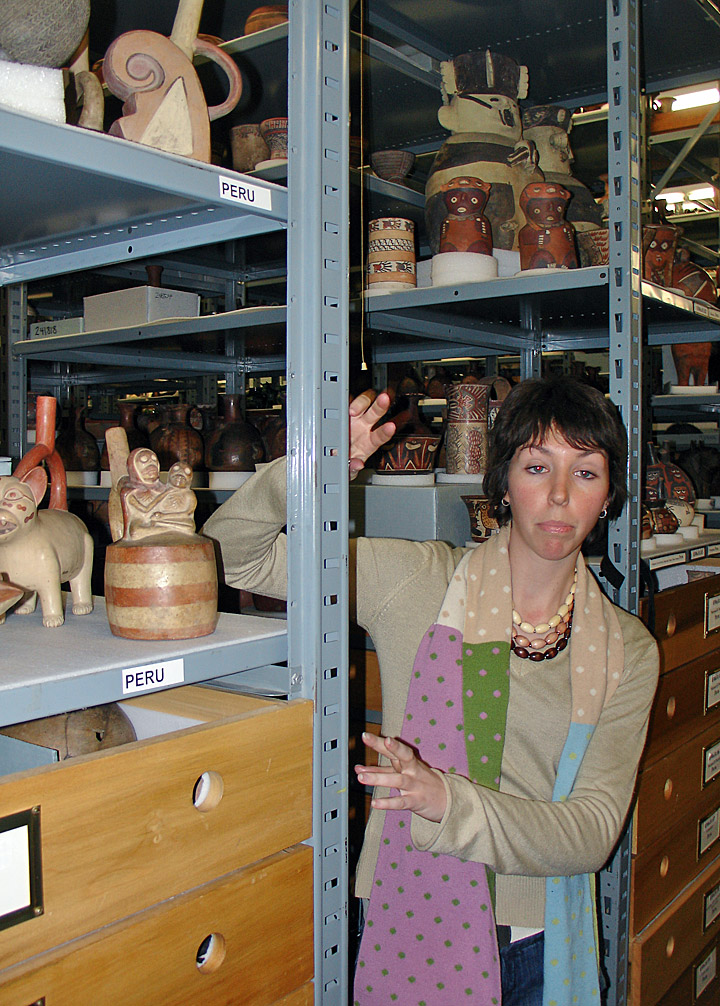
and were shown the Museum storage vaults
Other Photos from the Field Museum
Return to the Elderhostel page